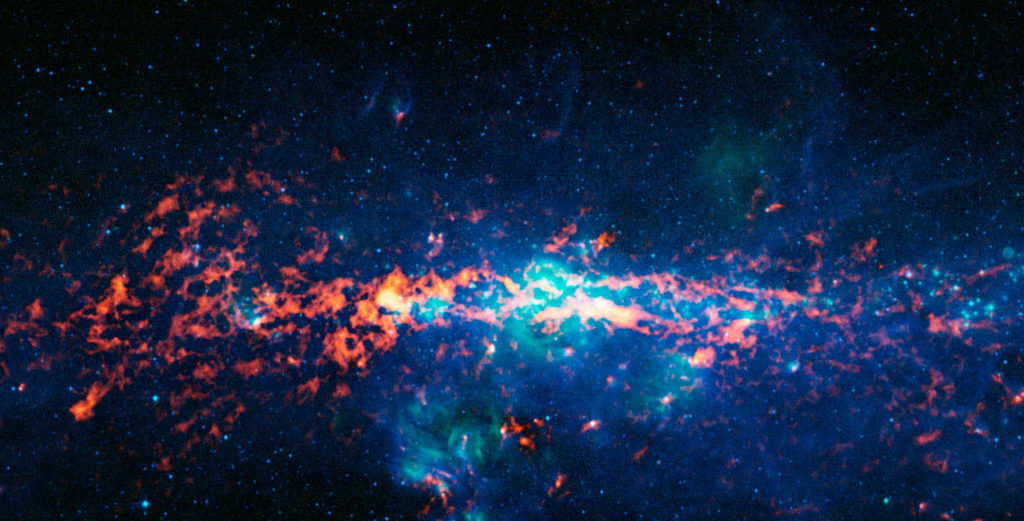Researchers from the Max Planck Institute for Radio Astronomy in Bonn have discovered the isopropanol molecule for the first time
For their study, astrophysicists useddata from the ALMA telescope. They developed a spectroscopy method to detect traces of individual complex organic molecules in the data collected by the telescope. Since 2014, researchers have found three new organic molecules in space using this method: isopropyl cyanide, N-methylformamide, and urea.
In a new work published in the journalAstronomy & Astrophysics, researchers reported the detection of two isomers of propanol (C3H7OH) in data from the Sagittarius B2 molecular cloud. They differ from each other by the carbon atom to which the hydroxyl group is attached. Astrophysicists note that this is the first time that isopropyl alcohol has been detected in the interstellar medium and propyl alcohol in a star-forming region.
 Image of the Galactic Center and Sagittarius B2.Sagittarius B2 is one of the largest clouds of molecular gas in the Milky Way. It is located near the Galactic Center. In the image, this is the bright orange-red area on the left. Source: ESO/APEX and MSX/IPAC/NASA
Image of the Galactic Center and Sagittarius B2.Sagittarius B2 is one of the largest clouds of molecular gas in the Milky Way. It is located near the Galactic Center. In the image, this is the bright orange-red area on the left. Source: ESO/APEX and MSX/IPAC/NASA
Identification of new substances in the spectra of regionsstar formation becomes more difficult the larger the molecule size. The researchers explain that complex compounds emit more spectral lines at different frequencies. In a source such as Sagittarius B2, there are so many molecules that form the observed radiation that their spectra overlap.
Thanks to the high angular resolution of ALMA, astrophysicists have identified parts of the molecular cloud that emit very narrow spectral lines. It was this solution that helped to discover two isomers of propanol.
Researchers say the discoveryclosely related molecules that are slightly different in structure will help to better understand the formation of substances in the interstellar medium. By measuring the ratio of different isomers, scientists want to determine what chemical reactions take place in molecular clouds.
Cover image: Max-Planck-Gesellschaft, GLOSTAR (Bruntaler et al. 2021, Astronomy & Astrophysics), Wikipedia (Public Domain)
Read more:
The space probe flew 200 km from Mercury. Look what he saw
Scientists uncover how vitamins affect the incidence of cancer
Chinese mind-reading helmet sounds the alarm when a person sees porn content